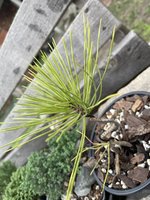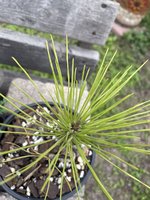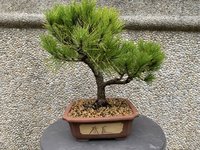Josephflores960
Sapling
My Japanese black pine seems to be a lot lighter than the usual dark green I see on other JBP’s. I did come with a compact soil and I put in a perlite, orchid bark, and some coco coir soil mix and it seems that substrate dries out way faster than the soil it originally came in. Do I go back and take off some of the soil from the rootball and just put it in pure lava rock or a mix of akadama, lava rock, and pumice? Thank you.
I live in south Texas with the temperatures right now being in the 70’s.
I live in south Texas with the temperatures right now being in the 70’s.






